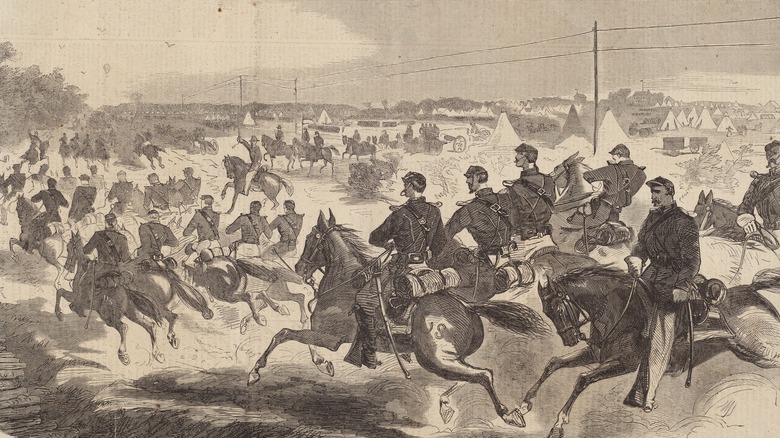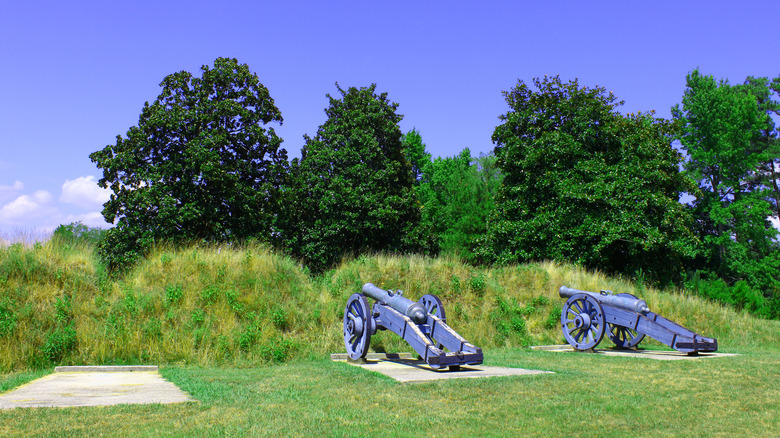The Civil War Battle That Also Took Place In Yorktown
When someone mentions Yorktown, the first thought is often the battle that took place there during the Revolutionary War. The Battle of Yorktown was the last major military clash in the fight for independence that ended with British General Cornwallis' surrender. But many decades later, Yorktown was also the site of a face-off between Union and Confederate forces during the Civil War. And this nearly month-long conflict ended without a clear victory for either side, according to the American Battlefield Trust.
The Battle of Yorktown, the Civil War edition, started on April 5, 1862, with a confrontation between Union and Confederate troops at Lee's Mill, which was located on the Warwick River in Newport News, Virginia. General George B. McClellan of the Union Army had not expected to encounter this resistance and it interfered with his plan to march on Richmond, the Confederate capital. After this clash, he decided to go a different way and prepared for a siege on Yorktown.
The Union side had a significant military advantage. According to various reports, they had anywhere from 100,000 to 120,000 soldiers, while the Confederates only had 11,000 soldiers in the area led by Major General John Bankhead Magruder (via the National Park Service). But the Confederate forces pulled an interesting trick to make McClellan think that he was facing a more substantial military opponent: They used "Quaker Guns," logs painted black and made to look like cannons, to bolster the appearance of their arsenal (via History).
Confederate forces slipped away from Union troops
On April 16, 1862, McClellan had his soldiers test the Confederate defenses at another point on the Warwick River known as Dam No. 1, but again the Union troops were forced to pull back (via the American Battlefield Trust). McClellan determined that the best course of action would be to launch a large-scale artillery attack followed by a siege of infantry troops. And McClellan had some serious firepower: According to the National Park Service, the Union side had 101 siege guns, including more than 40 siege mortars. The biggest of these weapons — the seacoast mortar — could fire a massive 220-pound shell.
Confederate forces, now led by General Joseph E. Johnson, had no plans to stick around once the shelling started. In fact, while McClellan was preparing his assault, Johnson was planning to leave. On the morning of May 4, the Union soldiers discovered that the Confederates had left, leaving Yorktown abandoned (via the National Park Service). The Union held on to Yorktown for the rest of the Civil War, but the nearly month-long conflict gave the Confederates time to improve their defense of Richmond.

